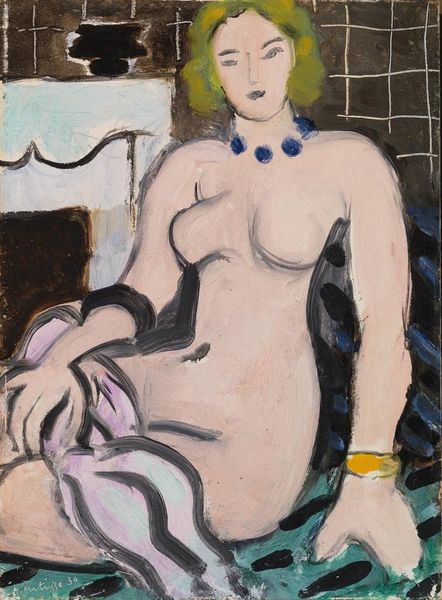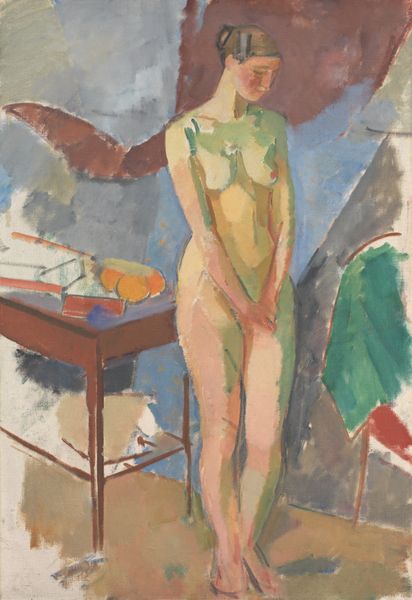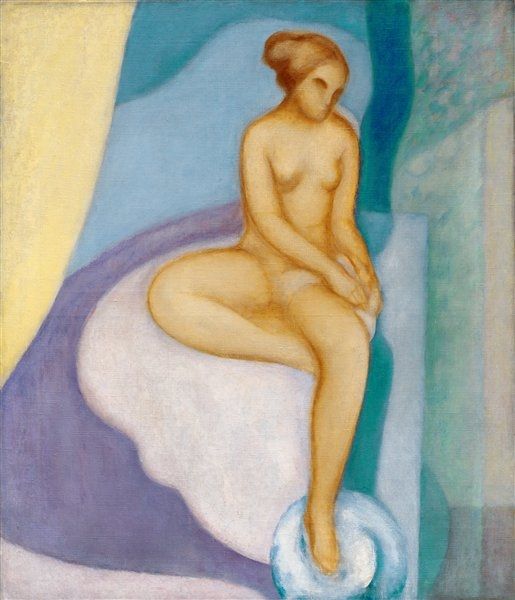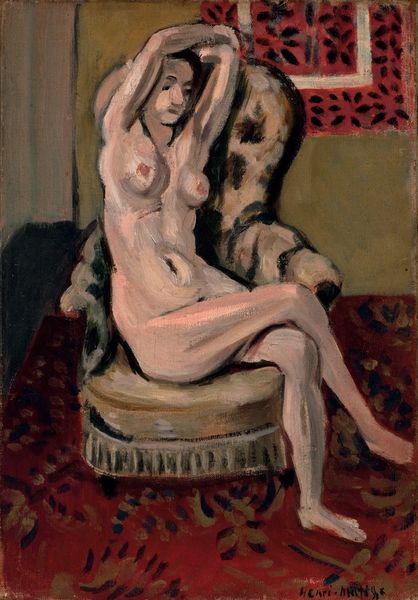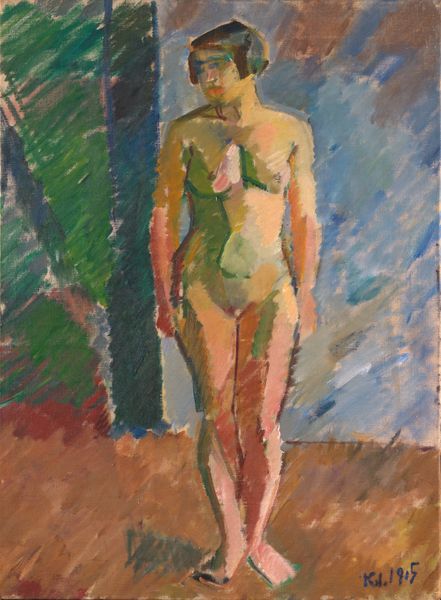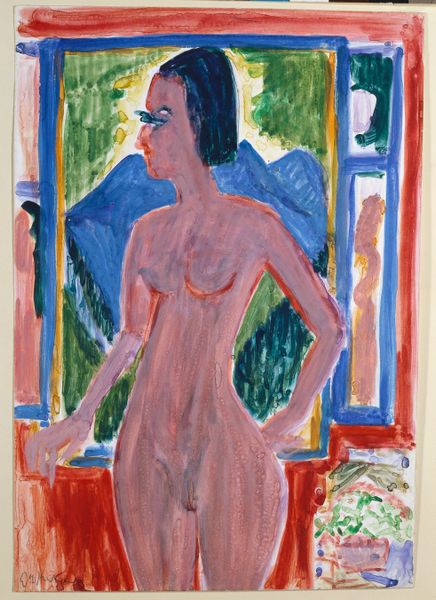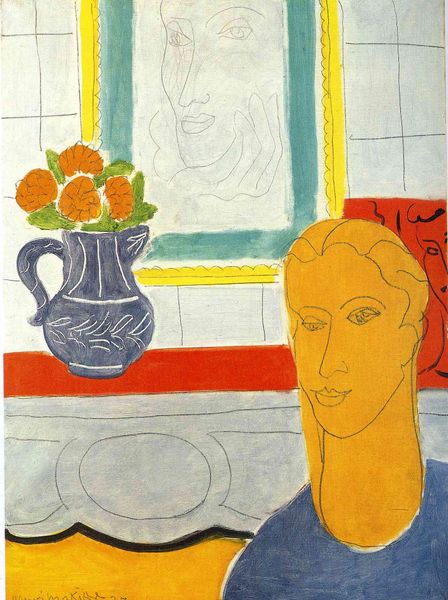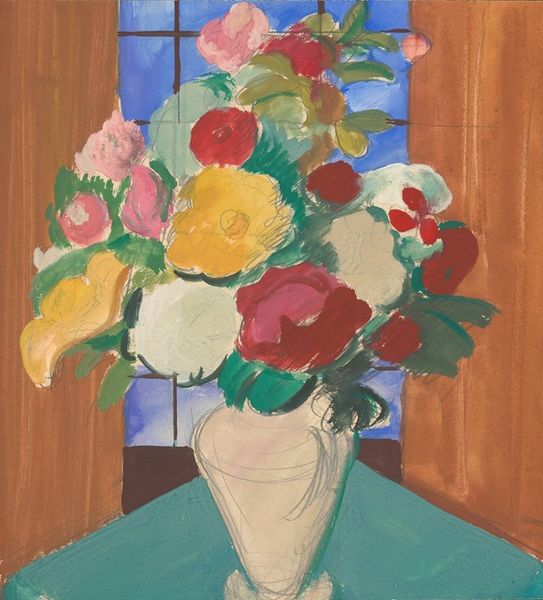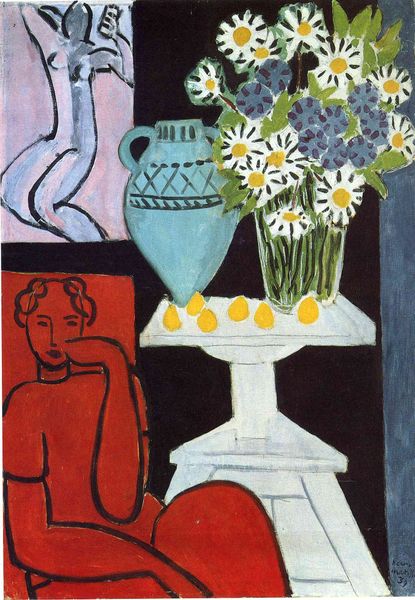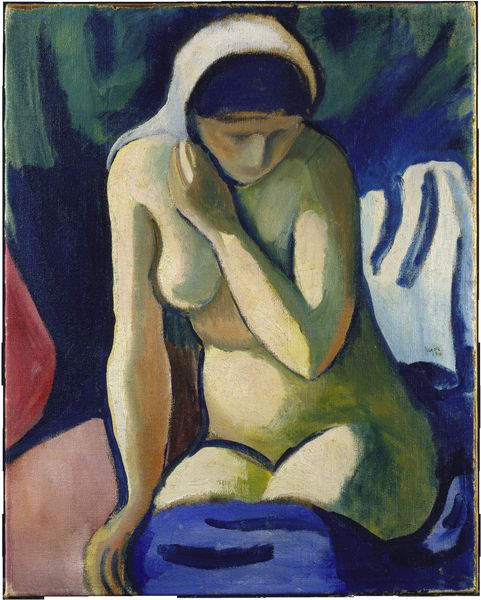
#
painted
#
possibly oil pastel
#
oil painting
#
fluid art
#
acrylic on canvas
#
coloured pencil
#
pastel chalk drawing
#
painting painterly
#
watercolour illustration
#
watercolor
Copyright: Modern Artists: Artvee
Curator: Welcome. Here we have Henri Matisse’s "Antique et oeillets," created in 1928. Editor: My first thought is that the color palette is strangely comforting—it feels like being in a cool bathroom on a summer day. Curator: Indeed. Beyond that aesthetic, it presents an interesting juxtaposition. On one hand, you have a classical bust, embodying Western art history’s often-idealized female form, set against, on the other hand, a domestic interior signified by the rather banal tiling. It really asks, “What does it mean to situate a classical form, which inherently carries legacies of power and gendered expectations, in a private space?" Editor: I’m struck by the tabletop and legs – what kind of wood do you think he’s portraying here, and does the surface’s finish appear handmade or commercially produced? It is positioned to carry so much symbolic weight, literally holding up the art historical figure. Curator: That's where the brilliance of Matisse comes in! Consider the carnations. By placing them adjacent to the sculpture, Matisse complicates that power dynamic. He uses these readily available, somewhat ephemeral, material items to almost humanize the bust by highlighting a life moment rather than pure adulation or desire. This shifts focus to an immediate present, away from the static expectations associated with classical representations of women in that the sculpture represents. Editor: And look at that blue vase – is that ceramic or porcelain? Because either selection means engagement with a complex web of labor practices and social meanings that extend far beyond Matisse’s studio. And the method, oil paint—that brings its own loaded, complicated, historical tradition. Curator: Exactly. So, perhaps, "Antique et oeillets" compels us to examine not just beauty standards, but also the power structures perpetuated by them through this complex web of labor, gender and capital. Editor: So we look at Matisse’s decision to put his items to make those histories that inform art itself become visible. Thanks, that has reframed it all for me.
Comments
No comments
Be the first to comment and join the conversation on the ultimate creative platform.

